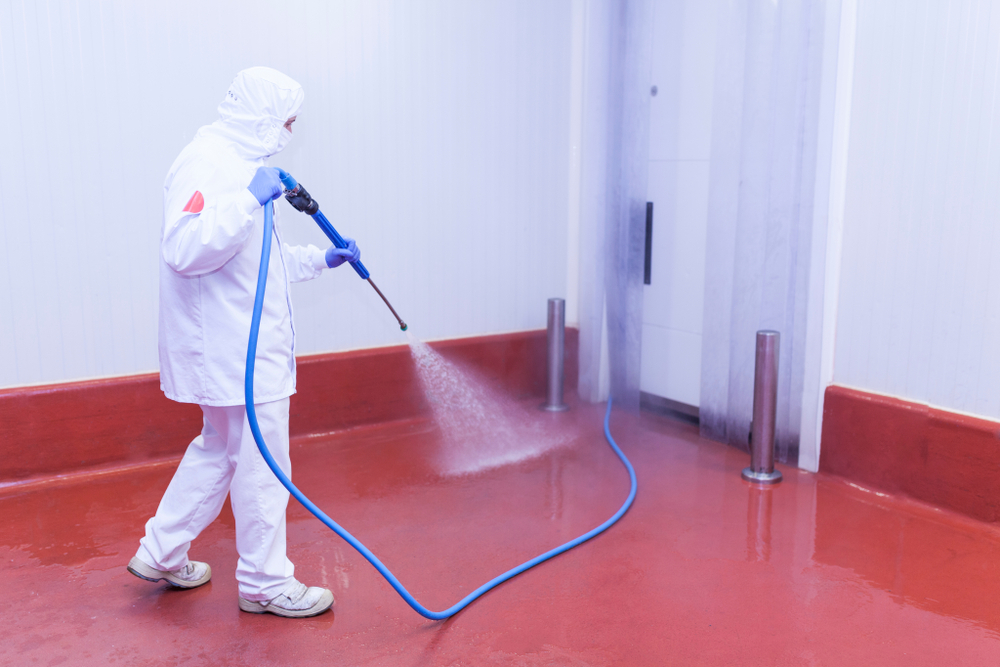A Complete Guide to Cold Room Cleaning
If you work in the food industry, you know how crucial it is to maintain a clean, hygienic environment, especially in cold rooms. A poorly cleaned cold room can be a breeding ground for bacteria, contamination, and even cause food spoilage. Many regulations govern the standards and processes of cold room cleaning, which can be overwhelming. However, with the right knowledge and tools, it’s possible to keep your cold room spotless, sanitary, and compliant. In this article, we’ll cover everything you need to know about cold room cleaning.
How to Clean a Cold Room?
Maintaining cleanliness in a cold room is crucial for ensuring the safety and quality of stored perishable goods. By following these steps, you will learn the best practices to keep your cold room in optimal condition, preventing contamination and maximising its efficiency. Let’s dive into the comprehensive guide and discover the essential steps to achieve a clean and hygienic cold room environment.
Planning
The first step in cold room cleaning is planning and preparation. It’s essential to set a schedule that aligns with your cold room usage, operations, and food safety requirements. Determine which sections of the cold room need cleaning, breakdown tasks, and decide on the right cleaning agents, tools and equipment. You’ll need to follow detailed cleaning procedures that may vary depending on the type of cold room, storage temperature, and the food products stored. Review local, national, and international food regulations and safety standards, which are vital in the food industry.
Cleaning techniques
Effective cold room cleaning relies on using appropriate cleaning techniques. Cleaning techniques used depend on what needs to be cleaned or sanitised, including the walls, ceiling, floor, shelves, or equipment. Use hot water and detergents for general cleaning. However, different cleaning agents suit specific jobs and surfaces, such as hydrogen peroxide, sodium hypochlorite and quaternary ammonium for disinfecting surfaces. It’s crucial to follow the manufacturer’s instructions when using cleaning products, especially if it requires dilution.
Equipment and tools
The tools and equipment used in cold room cleaning must be designed to clean and sanitise surfaces and equipment without creating damage. Some of the tools you’ll need include a high-pressure washer, scrubber, squeegee, and wet and dry vacuums. It’s essential to maintain equipment regularly, noting any damages or wear and tear that may disrupt cleaning operations. Choose equipment and tools that are easy to use, efficient, and time-effective, making it easier for your team to clean while reducing cleaning times.
Personal Protective Equipment
Consider the safety of your team when cleaning cold rooms by providing personal protective equipment (PPE). Cold rooms have different environmental factors that require suitable PPE, such as protective gloves, eyewear, and face masks. Low-temperature cold rooms will require PPE that provides protection from cold temperatures. Safety guidelines recommend carrying out a risk assessment and making the necessary PPE available. Regularly inspect the PPE for damage and replace it when necessary.
Training
Trained and knowledgeable employees are vital to effective cold room cleaning. Ensure your team knows which cleaning procedures to follow, which products and equipment to use, and how to ensure proper sanitation. Regular training and refresher courses help your team stay current with food industry regulations and hygiene best practices. Training also ensures that your team is familiar with your cold room’s layout, temperature requirements, and the need for careful handling of food products.
Should You Invest in a Cold Room?
Investing in a cold room can be a wise decision for businesses dealing with perishable items. The benefits of having a cold room are numerous and impactful. Firstly, a cold room provides precise temperature and humidity control, ensuring that perishable products maintain their quality and freshness for extended periods. This allows businesses to reduce product spoilage and waste, resulting in significant cost savings.
Additionally, a cold room enables efficient inventory management by providing ample space for bulk storage and organised categorization of products. It streamlines operations, enhances stock rotation, and improves overall workflow. Moreover, having a dedicated cold room eliminates the need for relying on external storage facilities, reducing dependency and potential risks associated with outsourcing storage.
By having full control over storage conditions, businesses can optimise their supply chain, minimise product loss, and ultimately enhance customer satisfaction. Investing in a cold room is a strategic move that can drive profitability, efficiency, and long-term success in industries such as food and beverage, pharmaceuticals, floral, and beyond.
Conclusion
A clean and sanitary cold room is critical for ensuring food safety, reducing food spoilage, and maintaining a compliant food operation. It’s essential to have a well-thought-out cold room cleaning plan, use appropriate cleaning techniques, choose the right equipment and tools, provide suitable PPE and continue to train and educate employees. Effective cold room cleaning requires teamwork, attention to detail, and dedication. By following the best practices, you’ll promote a clean, hygienic, and safe food operation.
You may also like
-
Get Exclusive Diwali Offers on Whirlpool Double Door Refrigerators
-
Who is Best Pipe and Joint System Supplier in Malaysia
-
How Same-Day Garage Door Repair Westchester Saves Time and Money
-
Residential Garage Door Repair Brooklyn | Safe & Affordable Service
-
The Hidden ROI Behind Smart Office Interior Design

